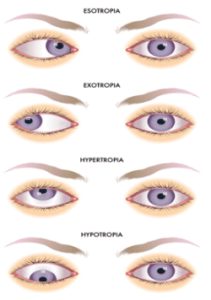A study was published in the Journal of Human Kinetics that demonstrated the benefits of vision training in female athletes. This study not only shows how vision training can positively impact functional visual skills short term but also, how the improved visual skills will remain and can then can be further built upon. Clinical tests were performed prior to training, after eight weeks of training and then again 4 weeks after training was completed.
This study included the measurement of eye alignment (phoric posture) and binocular ranges of fusion (convergence and divergence or vergences). Eye alignment, or resting eye posture, is described as the position the eyes assume when at rest. This happens when the eyes are closed or when eye teaming is broken. The most common phorias are esophoria and exophoria. It is also possible to have a hyperphoria or hypophoria.

It has been reported that around 70-80% of the population has some degree of phoric deviation, therefore it is important to consider the implications1. When the eyes are open, an adjustment must be made in order to point the eyes in the same spot and create binocular teaming. This adjustment depends on the direction of the phoria, or starting point. The adjustment is made by an eye teaming movement called vergence
For example, an individual with exophoria would need to make a convergence movement to create proper eye teaming. Two targets (double vision) would occur if this movement wasn’t initiated. If the corrective amount of convergence isn’t applied, stereopsis (depth perception) could be compromised. Having and maintaining depth perception is crucial for sports.
More so, studies have shown that exaggerated phoric postures can influence where an object is perceived in space. Rhythm, timing, and anticipation are also crucial skills when playing sports. It has been shown that a person with an exophoric posture will tend to perceive a target closer than it actually is and a person with esophoric posture will tend to perceive a target that is farther than it really is2.
The team at Vizual Edge understands the importance of the visual skills mentioned above. Exaggerated phoria in combination with insufficient vergence eye movements could cause substantial errors in judgment and anticipation as it relates to on-field play. Eye alignment (phoria) and vergence (convergence/divergence) are not only tested with Vizual Edge but the software program can provide a training program to improve upon those particular visual delays.
Ryan Edwards, OD, FCOVD
Developmental Optometrist
Dynamic Center for Vision Therapy